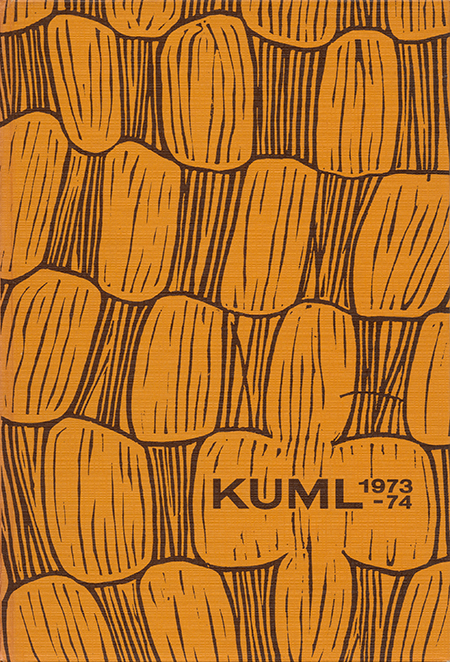Sarup, et befæstet neolitisk anlæg på Sydvestfyn
DOI:
https://doi.org/10.7146/kuml.v23i23.97018Nøgleord:
Sarup, anlægResumé
Sarup, a fortified Neolithic site
lnvestigations have started at Sarup in south-western Funen of a Neolithic settlement situated on a sandy promontory (fig. 1). At that part of the promontory where there was no natural boundary, traces were found of defence works consisting of several long ditches and of palisades.
The ditches are interrupted about every 15 m by courseways (fig. 1). Two of them have been investigated so far (I and II in fig. 2). Ditch I is 16.3 m long with a maximum width of just under 5 m and a subsoil depth of about 1.4 m. A crosssection reveals a 2 m wide, flat bottom; the ditch was also flat in longitudinal section. Wind-blown sand quickly began to fill it and is found in layers along the bottom and sides. When the ditch fell into disrepair, four Middle Neolithic habitation layers were deposited in it (7). At the bottom of the ditch, without connection with any habitation layer, a large funnel beaker was found (fig. 4 and 5). Its position in the ditch must correspond approximately to the period in which the ditch was dug, Middle Neolithic Funnel Beaker period I.
A rich artefact material of flint and pottery was found in both the ditches investigated so far (8)(fig. 6).
West of ditch I a double palisade ditch (a in fig. 2) has so far been found, with traces of posts placed close together. South-west of ditch I this palisade was interrupted by a pair of transverse palisades (b in fig. 2 and fig. 7), which ran out into the area between ditch I and another ditch (III) south of this. West of palisade a, ditch IV and ditch II, traces of yet another palisade (c in fig. 2) were found.
It is difficult to say whether there has ever been a rampart between the long ditches and the palisade at Sarup, but the large quantities of earth excavated from the ditch must have been dumped somewhere. Excavation has shown, however, that in those areas where the rampart should be expected, pits have been dug into the subsoil in MN IJ, so it must have been removed before this.
Besides these remains of a defence system, investigations within its area have revealed a considerable number of rubbish pits and post holes, which with rich surface finds show that the area was settled in several of the Middle Neolithic Funnel Beaker periods. It is hoped that future investigations here will reveal the pattern of settlement.
Niels H. Andersen
Downloads
Publiceret
Citation/Eksport
Nummer
Sektion
Licens
Fra og med årgang 2022 er artikler udgivet i Kuml med en licens fra Creative Commons (CC BY-NC-SA 4.0).
Alle tidligere årgange af tidsskriftet er ikke udgivet med en licens fra Creative Commons.


